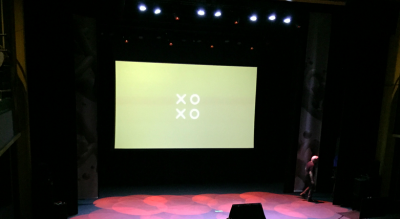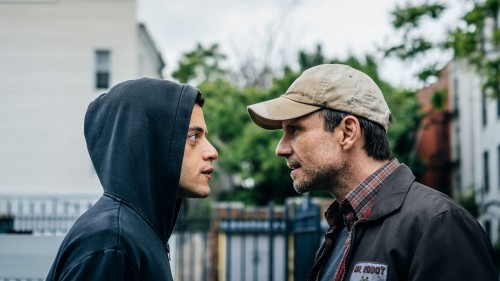We should have seen this coming. The end of the world as we know it was announced today, unceremoniously with a blog post. Scripps Institution of Oceanography is reporting that we’ve definitely surpassed the 400 parts-per-million threshold for atmospheric CO2. It is at this concentration that a cascade effect is triggered and acidic seas rise to new heights, extinction rates increase, and food systems are permanently disrupted. More on all of that here. more...
This is the Pen Pineapple Apple Pen (PPAP) song that started amassing virality around 25 September 2016, despite being published on YouTube a month earlier on 25 August 2016. This is the tutorial from its original artist, published on 26 September 2016 in response to volumes of covers, remixes, and parodies being produced as the song approaches the climax of viral fame.
The ‘official’ backstory, according to the wisdom of throngs of popular media articles churned out this week, is that the artist in the video is Piko-Taro, a fictional character played by entertainer DJ Kosaka Daimaou, whose is actually a 51-year-old Mr Kazuhiko Kosaka. His character Piko-Taro first began life as a stand-up comedian at live shows. (For those of you who are in-tune with YouTube or Influencer culture, think Miranda Sings as the fictional character played by microcelebrity Colleen Ballinger who goes by the handle ‘PsychoSoprano’ on the internet. See also here.)
Piko-Taro started his YouTube channel on 23 August 2016, posting short songs while dressed in his now-signature gaudy fashion and wig, with flamboyance in tow. The virality of his debut PPAP video was facilitated by digital user-generated humour platform 9GAG on its Facebook page. In the wake of his recent virality, Piko-Taro has been retweeting and responding to some followers in a smattering of English on his Twitter, which was created just months prior in June 2016. He is on Facebook here.
In this post, I discuss the circulation of PPAP, the value judgments made about it, its characteristics and predecessors, and the potential future of Piko-Taro.
– more...
Vilem Flusser’s work is still rather obscure in English language academic circles. Only a handful of major works from the media philosopher have been translated from his native German or adopted Portugese, and even that was only in the past two decades, well after his death in a car accident in 1991. While teaching MFA students, I found Flusser’s The Shape of Things, a collection of essays on design, to be extremely helpful when seeking to define some basic terms (for instance, the word “design” itself). But in my own work considering our technologically mediated world, I found 1983’s Towards of Philosophy of Photography a critical read.
What if you could combine the unstoppable power of good-old American entrepreneurialism with the force of dank memes to create a revolution? That’s what Oculus Rift founder Palmer Luckey wanted to do. He wanted to bankroll an organization founded by moderators of Reddit’s r/The_Donald, a 501(c)4 non-profit called Nimble America. But the organization’s roll out and first real fundraising drive on the subreddit did not go as planned. The_Donald supporters were not having any of it.
Warning: Major spoilers for Mr. Robot (through s02e06) follow.
********************************************************************************************************* more...
Last month, Instagram decided to introduce “Stories“. Admittedly a copy of Snapchat’s Stories, Instagram writes:
With Instagram Stories, you don’t have to worry about overposting. Instead, you can share as much as you want throughout the day — with as much creativity as you want. […]
Instagram has always been a place to share the moments you want to remember. Now you can share your highlights and everything in between, too.
This signals two things to me:
1) The curation rhetoric of Instagram as a regulated repository with optimum posting times and frequencies to maximize viewer perception is being acknowledged. Instagram wants us to break out of this normative practice popularized by its top Influencer Instagrammers so that more content will be shared more frequently.
2) The curation rhetoric of Instagram as a highlight reel for only one’s “best images” is being acknowledged. Instagram wants us to contentdump on its platform instead of cross-platforming (over to Snapchat!) to post our mass of “non-Insta worthy” frivolous content.
I have some thoughts.
 The hack and leak of Colin Powell’s emails have brought with them a national conversation about journalistic ethics. At stake are the competing responsibilities for journalists to respect privacy on the one hand, and to inform the public of relevant ongoings on the other.
The hack and leak of Colin Powell’s emails have brought with them a national conversation about journalistic ethics. At stake are the competing responsibilities for journalists to respect privacy on the one hand, and to inform the public of relevant ongoings on the other.
Powell’s emails, ostensibly hacked and leaked by Russian government forces, revealed incendiary comments about both Donald Trump and Hillary Clinton. Known for maintaining a reserved and diplomatic approach, the indiscreet tone of Powell’s emails had the appeal of an unearthed and long suspected truth.
The news media responded to the leaked emails by plastering their content on talk shows and websites, accompanied by expert commentary and in depth political analyses. Line by line, readers, viewers, and listeners learned, with a sense of excitement and validation, what Colin Powell “really thinks.” more...
A lot has been said about the removal of the 3.5mm headphone jack from the iPhone 7 but one essay that still has me thinking comes from The Verge’s Nick Statt who notes that Apple’s latest phone model is a “gift” to accessory makers. By removing an often-used port, Apple has opened the floodgates and soon we’ll be caught in a torrential downpour of over-priced adapters and dongles meant to keep your favorite headphones in use. Even more adapters will make it possible to listen and charge at the same time. Eventually, after replacing or dongling half of the things that connect to your phone everything will go back to normal. more...
Doctor’s don’t want you to self-diagnose and would prefer you got rid of the internet entirely—a sentiment that is quite understandable. Medical professionals have gone through extensive training, continue to keep up with recent research findings, and are there to help the patients who come under their practice. Moreover, doctors have to maintain these laudable goals under tight time constraints and competing pressures. When a patient comes in with a self-diagnosis and treatment plan acquired through WebMD and responses to their Facebook blast, it not only dismisses the physician’s professional expertise, but also requires time and energy in which the physician has to consider—and often debunk—patients’ firm sense of knowledge based on incredibly partial and unreliable information. I get it. But with an article released this week that traces the direct influence of the sugar industry upon heart health research, seeking crowdsourced medical advice that originates outside of the established medical canon emerges as both appealing and entirely reasonable. more...
A terror attack takes place.
A large protest breaks out.
A natural disaster occurs.
A prominent public figure dies.
In the earliest minutes, while news networks are scrambling to give the event a name, vernacular users on Instagram offer a flurry of hashtagged tributes with text post prayers, stock photography, and artful homages.
Soon, a primary hashtag and emblem for the event emerges: The yellow umbrella for #OccupyCentral, the Monumen Nasional for #KamiTidakTakut, the Eiffel Tower for #PorteOuverte, silhouettes of the late Mr Lee Kuan Yew for #PrayForLKY.
Yet, alongside these consolations are Instagram users who attempt to appropriate the attention current of these trending channels for self-publicity, flooding dedicated hashtags with scarcely relevant selfies, outfit of the day shots, wares for sale, and redirected links.
How do we make sense of this?
It’s been an agonising series of weeks after a string of grievous events in various parts of the world. I have been tracing vernacular responses to global grieving events on Instagram since 2014, and some of the case studies are archived here.
However, of late, global tributes on trending hashtags have been featuring a more prominent disdain for, rejection of, and critique on public grieving in memes and “thoughts & prayers” en masse.
In this post, I trace the various global grieving hashtags on Instagram and mull over the presentation of grief in public digital spaces.









